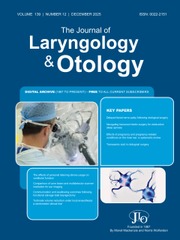No CrossRef data available.
Article contents
Efficacy of the automated mechanical repositioning chair treatment for patients with benign paroxysmal positional vertigo
Published online by Cambridge University Press: 21 October 2024
Abstract
This study aimed to examine the efficacy of the automated mechanical repositioning chairs compared to canalith repositioning manoeuvres for elderly patients with benign paroxysmal positional vertigo (BPPV).
A retrospective study included 969 patients with BPPV who were first diagnosed at Beijing Chaoyang Hospital, Capital Medical University between 1 January 2020 and 31 December 2020. Patients were followed up for one year. Demographics, disease status, treatment and various outcomes were collected through medical record reviews and follow-up interviews.
Based on the criteria for evaluating treatment efficacy using objective and subjective indicators, BPPV patients treated with automated mechanical repositioning chair therapy showed a significantly better prognosis and lower recurrence rates.
Automated mechanical repositioning chair therapy is an effective approach for BPPV treatment, with advantages over conventional manual canalith repositioning procedures.
- Type
- Main Article
- Information
- Copyright
- Copyright © The Author(s), 2024. Published by Cambridge University Press on behalf of J.L.O. (1984) LIMITED
Footnotes
Ningyu Wang takes responsibility for the integrity of the content of the paper


